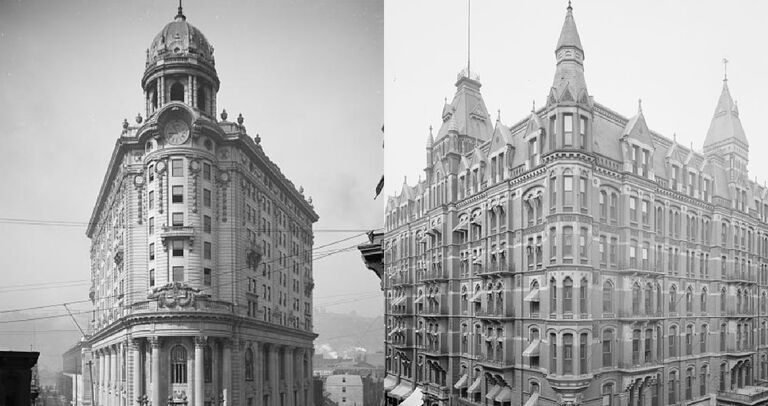Photos Of Beautiful Buildings Before They Were Lost To History
If history has taught us one thing, it’s that nothing lasts forever — not even the beautiful and important buildings that surround us. Architectural wonders that once defined a place or an era eventually succumb to the passage of time. It’s a bittersweet reminder of the impermanence of things and the ever-changing nature of our world. Magnificent palaces, historic temples, grand hotels: some of history’s most iconic structures have been lost to the wrecker’s ball or natural disasters over the years, and many people don’t even realize it. We’ve scoured the archives and gathered photographs of the most beautiful buildings that have been lost forever, but whose legacies remain.
40. Saltair Pavilion – Saltair, U.S.
This photograph shows the elegant domes, spires, and piers of the lavish Saltair Pavilion. Opened in 1893 in the resort town of Saltair, Utah, the pavilion overlooked the Great Salt Lake, famous for the extraordinary buoyancy it gives to swimmers. Known as the “Coney Island of the West,” this resort seemed cursed from the start. Catastrophe hit the first Saltair Pavilion in 1925 when a fire largely destroyed the structure. A new pavilion was built, but more disaster loomed: two more fires caused terrible damage, and the resort struggled in the aftermath of World War II. After a few failed attempts to save it, the beautiful structure was left to fall apart in the 1960s before a final fire destroyed it in 1970.
39. Paleis voor Volksvlijt – Amsterdam, The Netherlands
This imposing structure is the Paleis voor Volksvlijt, which was completed in 1864. Its Dutch name translates as “Palace of Industry,” and it was built as an exhibition hall. Said to have been influenced by the 1851 Crystal Palace in London, it, too, was lost to a fire. On the fateful night of April 17, 1929, a devastating fire engulfed the palace, leaving it in ruins. Although the gallery that held stores and apartments managed to survive the blaze, the main building suffered irreversible damage and was never rebuilt. It's intriguing to note that acclaimed writer Gerard Reve resided in one of the gallery apartments during the 1950s, adding a touch of literary history to the location. But the gallery itself met its demise in 1960 when it was demolished to pave the way for the construction of the new Nederlandsche Bank building.
38. Wabash Terminal – Pittsburgh, U.S.
This ornately decorated Beaux-Arts building stood in Pittsburgh, Pennsylvania, in the golden days of railroad travel. Dreamed up by Theodore Link, it was the terminus of the Wabash-Pittsburgh line when it opened in 1904. It loomed over Pittsburgh at a height of almost 200 feet over 11 floors and was really a sight to behold. The structure cost $800,000 to build, which equates to around $26 million in modern money. Sadly, this beautiful railroad station burned down in the spring of 1946 when it was engulfed by two major fires within a month. Demolition of the ruined building began on October 5, 1953.
37. House and shops – Hamburg, Germany
Rather battered but undeniably quaint, this ancient building was said to be the oldest house in Hamburg when this photo was taken in 1898. Dating back to 1524, the structure housed apartments as well as stores and an inn. Signs on the front of the building include one that reads “Haarschneide-Salon,” which is German for hairdresser. Despite much opposition from local residents, the building was pulled down in 1910 to make way for a modern shopping street. And this little piece of history was lost forever.

